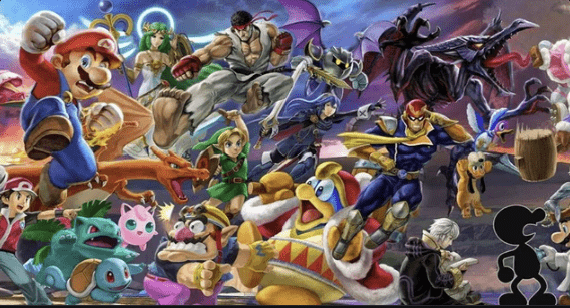Super Smash Bros Ultimate is a crossover fighting game developed by Bandai Namco Studios and Sora Ltd., and published by Nintendo for the Nintendo Switch in 2018. This exciting combat game allows players to choose amongst 90 playable fighters and battle each other on a variety of dynamic maps. Super Smash Bros Ultimate is rated 10+ due to its game violence, and is best played as a multiplayer game amongst friends who can battle one another. To play Super Smash Bros Ultimate as a feminist means to analyze the representation of the playable female characters within the game, and think of their implications in terms of patriarchal stereotypes. In playing and analyzing this game as a feminist, it becomes evident that this game falls short in the pure demographic of female representation, the one-dimensional and rather stereotypical portrayal of these characters, and the limited scope of the abilities of these female characters. Consequently, Super Smash Bros Ultimate still centers around masculinity and masculine audiences in a way that many historic video games has, despite its attempts to weave feminist stories and agency within the game.
To play Super Smash Bros as a feminist, one must play the female characters within the game, and analyze the game mechanics that come alongside these characters. In order to play this game as a feminist, I played as a number of the different female characters within the game, as well as played against CPU female characters to gain a better understanding of these characters and their abilities. One game where I played as Zero Suit Samus against Palutena can be seen below:
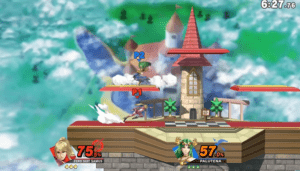
As I was playing as these female characters, I began analyzing their unique abilities, and putting them into perspective with other male characters within the game. Furthermore, playing this game as a feminist also requires one to play close attention to the way these characters are portrayed to the players. After becoming familiar with the mechanics of the female characters and their representation, it is essential to put these analyses in the context of the rest of the game’s characters. For example, many of the female characters in Super Smash Bros have some type of magical ability and tend to be graceful/quick, opposed to the brute force and slowness of many of the male characters in the game. Putting this in context allows one to make critical assessments of the game, such as the potential for it to be reinforcing traditional gender stereotypes. Overall, to play Super Smash Bros as a feminist, one must be able to become familiar with female representation within the game, and be able to critically analyze this within the context of the game and existing gender stereotypes.
Upon playing Super Smash Bros Ultimate as a feminist, it becomes clear that the game does not have an equal representation of male and female characters, portrays its female characters in stereotypical ways, and reinforces these gender stereotypes through the mechanics of the characters themselves. As seen below, despite there being over 90+ characters in Super Smash Bros Ultimate, there are only around 10+ characters that are female.
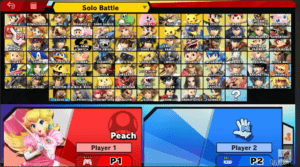
Although the game offers “skins” of each character that allows the player to change the gender of the character to the one they want to play, there’s still a prominent issue of lack of female representation within the game. This disproportionality reinforces the idea that this game might be catering towards a masculine audience. In addition, the female characters in the game are presented in either a hyper-feminine way, as Peach or Daisy is, or hyper-sexualized, as can be seen for Zero Suit Samus and Bayonetta below:
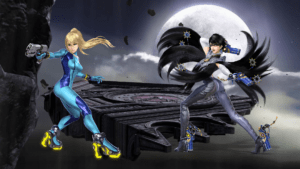
The way that these characters are sexualized and hyperfeminized, are indicative that this game is catering towards the male gaze. These characters have no practical need/mechanic for being portrayed in this way, and most of the female characters fall under these categories. Hence, these representations are often harmful, rather than providing a diverse and nuanced representation of women. Alongside these stereotypical representations, the mechanics of these female characters themselves are also quite stereotypical. As seen below, when I played Peach, one of her signature moves was hitting opponents with her hips, which results in a hyperfeminine love graphic appearing as she does this:
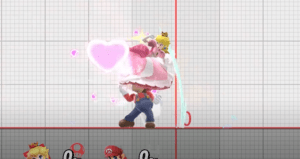
Alongside these hyperfeminine attacks, across the different female characters that I played, I noticed that their mechanics were quite different than a majority of the male characters. Many of the male characters, such as Ike seen below, utilize brute strength, and weapons such as swords or guns to fight:

These masculine characters often wield a very large weapon, and have regular to low speeds. In opposition, the female characters often don’t have weapon, use their legs and hands to fight, and often have weaker attacks in terms of brute strength, but are quicker and more graceful than most male characters. These game mechanics also feed into very stereotypical gender representations, which are embedded into the very mechanics of the game through the characters’ abilities, and the disparities across male and female characters. This is quite different from combat games such as Overwatch or Valorant, where playable characters are not only equally represented in terms of male vs. female characters, but specific abilities like strength are not only constrained to the male characters. In both of these games, abilities are instead focused on the narrative of the character and their background, and the narrative directly informs their game mechanics. Hence, my critiques of this game lie within its disproportionate representation, and stereotypical representations as can be seen in its portrayal of women characters and their abilities.
Super Smash Bros, despite attempting to incorporate feminist theories by incorporating player agency in its female characters, the game still centers around masculinity and masculine audiences that fails to incorporate feminism into the game. Because players are allowed to play the characters themselves, this awards players a certain level of agency to pave the representation of the female characters in ways that they desire. For example, although female characters don’t possess the same brute strength that the male characters do, if played well and strategically, are all very powerful characters. For example, Palutena and Zero Suit Samus are one of the strongest characters in the game, if played well by the players themselves. Hence, this level of agency can award players the agency that is described in the reading, where these players become their own active voices to combat the systems of power set up within the game. However the overall structure of the game still very much conforms to a masculine lens and audience. This is made clear through the hypersexualization and hyperfemininity of its female characters, the overall lack of representation in female characters, and the disparity in mechanics that all reinforce gender stereotypes. Ways that the game can further incorporate feminist perspectives include increasing the number of female characters within the game, re-designing characters to be less sexualized and stereotypically feminine, and re-designing the characters’ abilities themselves. For example, this can be through incorporating more brute strength or large weaponry into female characters’ abilities. Hence, increasing the inclusivity and lessening the disparity between male and female characters in this game can help incorporate more feminist perspectives into this game.
Overall, Super Smash Bros is a combat-focused game that, despite attempting to incorporate more gender inclusivity, falls short in incorporating feminist theories into its game. This is due to its stereotypical representations of women, as well as the disparities in their mechanics and portrayal. However, if the game incorporated more female characters and re-vamped their mechanics to be more inclusive, Super Smash Bros. can become a more inclusive and welcoming game to all people.


